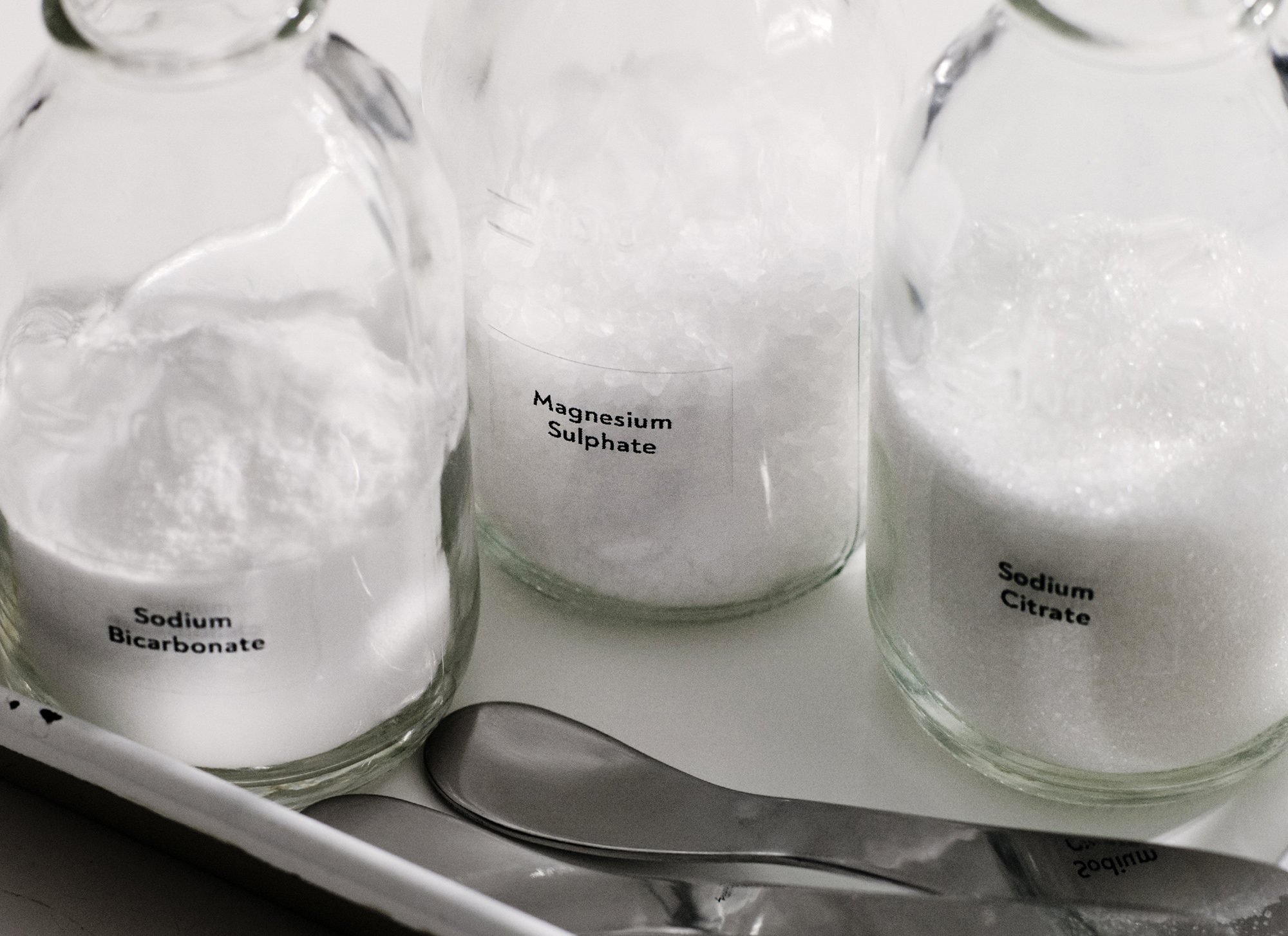Apart from bicarb and epsom salts…
A few months ago we released an updated version of our water recipes designed to allow you to easily target any hardness and alkalinity level you want, using two simple solutions — without having to do any complex maths. Since writing the post, a few people have written in to ask how to extend this method to use other mineral salts. We’ve written this post to make it as easy as possible to make your water with any mineral salts you would like to experiment with.
The bad news is that in order to do this, you will need to do some basic maths, and a little research into what your mineral contains. The good news is that in this post, we’ve tried to simplify these concepts as much as possible, so that even if you don’t understand the chemistry, you should be able to expand your water repertoire by following these instructions.
What Minerals Can We Use?
The idea with this post is that you can use anything you like, as long as it’s food safe! However, there are a few commonly used minerals to consider.

Hardness
- Calcium Chloride
- Calcium Sulphate
- Magnesium Chloride
- Magnesium Sulphate
Alkalinity
- Sodium Bicarbonate
- Potassium Bicarbonate
Both
These minerals are hard to dissolve, so for that reason we don’t recommend using them. If you want to try using these, you can carbonate the water using a sodastream to make them dissolve, but we find there are easier ways to get similar results.
Other
- Sodium Chloride
- Sodium Hydroxide
- Hydrochloric Acid
- Sodium Citrate
Calcium and magnesium minerals are responsible for hardness and give your extraction power, and the bicarbonates or carbonates add buffer, to moderate the acidity. These are the major components that control the way the water affects your coffee.
The chloride and sulphate ions don’t seem to have much effect on flavour at the concentrations we typically use, but can be corrosive or impart off flavours at high concentrations.
Sodium may have some effect in extraction, but too much will lend a salty taste to the water. Salt has also been reported to reduce perception of bitterness in small amounts (P. A. S. Breslin & G. K. Beauchamp, 1997).
Sodium Hydroxide and Hydrochloric Acid are used by Chris Hendon and Maxwell Colonna-Dashwood in “Water for Coffee” to control pH. However, because these chemicals are dangerous without careful handling, we don’t recommend using these.

Finally, Sodium Citrate is an ingredient in Third Wave Water, used as a buffer instead of bicarbonates. Using this correctly is a little more complicated and beyond the scope of this article, as it’s an organic molecule rather than a mineral, but we’ve listed it for completeness, should anyone want to experiment with it.
How Much to Use?
It’s maths time! The first step is to work out exactly what the content of your mineral is. Many common minerals exist naturally as a ‘hydrate’, meaning they include water as part of the crystal structure — for example, Epsom Salts are actually Magnesium Sulphate Heptahydrate (MgSO4.7H2O). This should be listed by the manufacturer, but if in doubt, check online for the common form of the mineral and what it should look like.
Once you know what you have, you need to know the molecular weight of the mineral — and rather than revising your high school chemistry, you can just Google the answer: for example, searching “molecular weight of magnesium sulphate” gives me the answer: 120.366 g/mol.
You then need to add the molecular weight of the water in the crystal — 18 g/mol for each water molecule. So for our example with Epsom Salts: 120.366 + (7 × 18) = 246.366 g/mol
Hardness
To work out how much of a calcium or magnesium mineral you need to add to 1L of water to get a certain hardness, just divide that number by 100,000 then multiply by the number of ppm hardness you require.
So here’s how to get 100ppm of hardness, using our example of Epsom Salts: 246.366 ÷ 100000 × 100 = 0.246g added to 1L water.
Alkalinity
To work out how much of a bicarbonate you need to add to 1L of water to get a certain alkalinity, just divide the number by 50,000 then multiply by the number of ppm alkalinity you require.
So, using Google we find that the molecular weight of sodium bicarbonate is 84.007 and it contains no extra water (anhydrous). To get 100ppm of alkalinity: 84.007 ÷ 50000 × 100 = 0.168g added to 1L water.
If you do use magnesium carbonate, then for both hardness and alkalinity, just multiply your desired ppm by 0.00084, then use that many grams in a litre of water.
And Then?
That’s pretty much it! To confirm you got the KH and GH you intended, you could use a drop kit to measure the water you’ve made. We don’t know much about how other minerals affect the taste of coffee, so for those minerals (such as table salt), trial and error is the way to go. If you want to tweak pH, the easiest way is to use a pH meter and add your acid or base drop-by-drop until you get the pH you want, but bear in mind that this will also affect the alkalinity.
Weighing such small amounts accurately is hard and needs special scales, which is why we use concentrates. You might find it easier to weigh out ten times as much as you need, then dilute the concentrate 1:10.
Look out for any cloudiness or white deposits at the bottom of your container — this tells you some minerals didn’t dissolve, or reacted together to form something that doesn’t dissolve, which will throw off your calculations.
Lastly, a warning: don’t put remineralised water in your espresso machine unless you’re very sure what you’re doing (in which case, you probably don’t need this post!). If you create super-hard water and scale up your kettle, it’s fairly easy to fix — but descaling an espresso machine is no fun at all.






34Comments